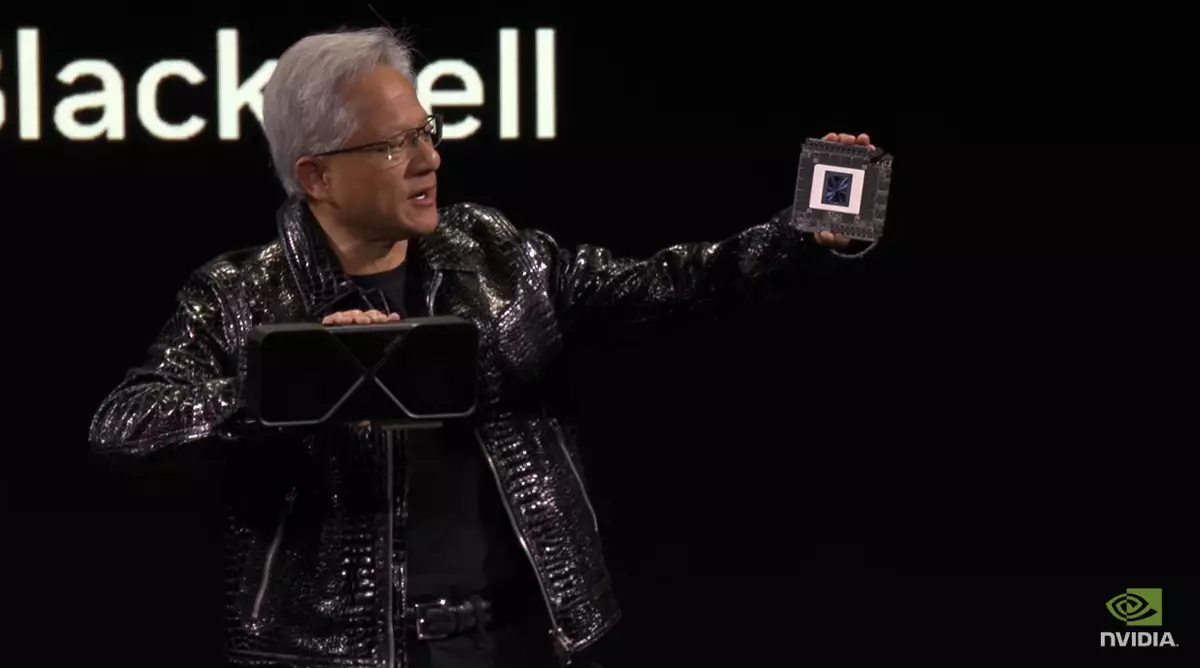The recent Nvidia keynote at CES 2025 was nothing short of spectacular, introducing a new lineup of GPUs that are set to redefine performance benchmarks in the gaming and graphics industry. With the unveiling of the RTX Blackwell series, including the mid-range RTX 5070, Nvidia promises unparalleled performance at a price point that could shatter expectations. This article takes a closer look at the implications of these announcements and the innovations that drive them.
One of the most striking highlights from the keynote was Nvidia’s claim that the new RTX 5070 GPU delivers performance on par with the previous generation’s flagship RTX 4090—priced at a staggering $549. This is revolutionary, as it positions a mid-tier GPU to compete against what was once considered the apex of graphics technology for nearly $1,600. The drastic reduction in price relative to performance raises questions about the evolving landscape of GPU pricing and consumer accessibility, especially in a market traditionally defined by exorbitant costs for high-performance hardware.
Moreover, the power behind this remarkable transformation is credited to Nvidia’s latest advancements in AI technology, particularly the introduction of Deep Learning Super Sampling (DLSS) 4. This feature harnesses a new Multi Frame Generation technology, which allows for the creation of up to three supplemental frames from a single frame computation. This capability not only improves frame rates but also enriches the gaming experience, suggesting that the performance potential touted by Nvidia may be more about innovative technology than sheer silicon strength alone.
Nvidia’s pivot towards utilizing advanced AI in its DLSS stack is not merely a technical upgrade; it signifies a paradigm shift in how graphics are rendered and experienced. By shifting to a ‘transformer’ model, Nvidia appears to be leaning into machine learning processes that optimize real-time rendering. This shift promises to enhance performance across a variety of games and applications—75 titles will support DLSS 4 upon its launch. Such widespread compatibility reinforces the relevance of these GPUs beyond raw specifications and highlights Nvidia’s effort to create a holistic ecosystem for gamers.
The full lineup includes several models: the RTX 5090 at $1,999, the RTX 5080 priced at $999, the RTX 5070 Ti at $749, and the RTX 5070 at $549. This structured offering illustrates Nvidia’s clear understanding of the market; they are placing high-performance options within reach of a broader audience while still maintaining flagship models for hardcore enthusiasts. The strategic pricing also counters earlier predictions of extreme price hikes, showcasing Nvidia’s focus on providing better value and performance.
While Nvidia has set ambitious performance expectations, skepticism remains prevalent among gamers and industry analysts. The assertion that the RTX 5080 can deliver double the performance of the already-capable RTX 4080 sounds enticing but raises concerns about concrete benchmarks. The performance enhancements resulting from the integration of DLSS 4 and Multi Frame Generation will have to be scrutinized thoroughly post-launch.
Moreover, the RTX 5090’s lofty price tag leads to further speculation regarding its performance. Nvidia claims it will outpace the RTX 4090 substantially, which invites questions about the scalability of AI-based enhancements as more demanding games emerge. How practical is this purported performance increase in real-world settings? These are the inquiries that will dominate discussions in the gaming community as the GPUs hit the market later this month and in February.
Nvidia’s recent announcements herald a significant transition in the GPU landscape, combining affordability with cutting-edge technology. As these new models prepare to enter the market, excitement is palpable, yet tempered by a dose of caution regarding performance promises. The RTX Blackwell series not only highlights Nvidia’s engineering prowess but also encourages a more competitive environment within the graphics market. With the promise of high-level performance at lower price points, the gaming community may find itself standing on the brink of an exhilarating new chapter in gaming technology.

